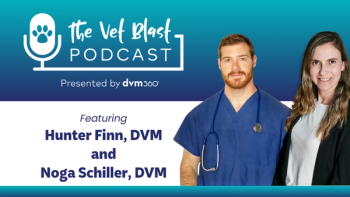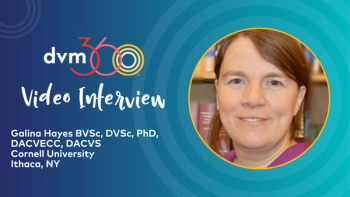
Brachycephalic airway syndrome, Part 2: Veterinary surgery of the soft palate and larynx
Advice on surgically correcting these areas in patients with brachycephalic airway syndrome.
EDITOR'S NOTE: SurgerySTAT is a collaborative column between the American College of Veterinary Surgeons (ACVS) and DVM Newsmagazine.
Brachycephalic airway syndrome is described in dogs and cats that have brachycephalic conformation—a short, wide head. The primary components of the syndrome are stenotic nares, an elongated soft palate and a hypoplastic trachea (most often seen in English bulldogs). All these features can be present, or the presence and severity of each component can vary. The result is altered airway pressures.
In the first article in this series, which appeared in the April 2012 issue of DVM Newsmagazine, I reviewed your options for correcting stenotic nares. Here I discuss the options and prognosis for fixing soft palate and laryngeal abnormalities.
Elongated soft palate
Elongation of the soft palate causes clinical signs when the palate contacts the epiglottis or extends past the caudal margin of the tonsils (Figures 1 and 2). Clinical signs (other than respiratory signs) include gagging, and sometimes the gagging will induce vomiting.
Figure 1: The caudal margin of the tonsillar crypt (red arrows). Note the amount of soft palate caudal to this level and that it is entrapping the epiglottis. (All photos courtesy of David Saylor, VMD, VCA Veterinary Referral Associates, 500 Perry Parkway, Gaithersburg, Md.)
Two landmarks are used to guide resection of the palate. The palate is resected to the level where it barely contacts the epiglottis or even by envisioning an imaginary line connecting the caudal margin of the tonsillar crypts. Palate resection can easily be accomplished by using scissors, a laser or a vessel-sealing device (LigaSure—Covidien).
Figure 2: The soft palate passes over the epiglottis (same patient as in Figure 1) and moves into and obstructs the lumen of glottis.
Scissor resection (often referred to as "cut-and-sew") requires mucosal closure with suture apposing the nasal mucosal surface to the oral mucosa. A fine (4-0 or smaller), rapidly absorbing suture is usually used in a simple continuous appositional pattern. Laser and LigaSure techniques do not require suturing, but sutures can be used (Figure 3).
Figure 3: The appearance of the resected soft palate site when a vessel-sealing device (LigaSure) is used. The appearance is similar to that resulting from laser procedures.
Avoidance of excessive carbonization with the laser is imperative. Swelling, hemorrhage, overshortening and dehiscence are potential complications. Swelling and hemorrhage are the most concerning as they can cause severe airway obstruction. Overshortening can cause nasal reflux of oral contents into the caudal nasopharynx, but this is rarely seen clinically, especially if the landmarks are used (Figure 1).
Laryngeal changes
Secondary changes are eversion of the laryngeal saccules (Figure 4) and laryngeal collapse. These two components occur from lifelong excessive inspiratory pressures that place undue stress on the airway structures. In most cases, eversion of the laryngeal saccules usually occurs earlier than laryngeal collapse.
Figure 4: After the soft palate has been mobilized (same patient as in Figure 1), the arrow points to the white, shiny, everted laryngeal saccules. Also note the amount of glottic area obstructed by the eversion of this tissue.
The saccules can be removed by excision and allowed to heal by second intention. Swelling of the saccule sites can cause airway obstruction postoperatively. Once laryngeal collapse occurs, the prognosis becomes guarded, and treatment can be fraught with complications. There are no widely accepted techniques to treat laryngeal collapse. When clinical signs progress, permanent tracheostomy or euthanasia is usually required.
Perioperative and postoperative care
Antibiotics are not necessary perioperatively. Preoperative administration of anti-inflammatory medication is recommended after soft palate resection and sacculectomy. Antiemetics can limit gagging and vomiting; these should be administered to the patient preoperatively.
Any patient undergoing upper airway surgery must have tracheal intubation and may require temporary tracheostomy postoperatively for relief of airway obstruction caused by swelling, hemorrhage or a combination of the two. Oxygen therapy is administered in the postextubation period. Animals with preoperative respiratory crises or that have moderate to severe clinical signs need close monitoring after intubation. Reintubation and temporary tracheostomy should be anticipated if obstructive signs occur.
The need for tracheostomy seems greater in dogs requiring multiple airway procedures and intraluminal manipulations (sacculectomy). In most cases the tracheostomy is needed for about 48 hours or as long as needed to allow swelling to decrease. Ensuring that patients are both comfortable and calm means avoiding situations that induce heavy panting, barking and exertion, which can create inflammation. Fans can be used for cooling as needed.
Prognosis and precautions
Many patients that undergo an operation at a young age should have little progression of airway signs and can be relatively active. Caution should always be used with exertion and exposure to high temperatures since a brachycephalic animal can get into a heatstroke crisis. Avoiding obesity is difficult in several of these breeds, but many animals seem to retain a lot of perilaryngeal fat that complicates their airway patency. Owners should be instructed to avoid using neck leads and use a harness instead.
Dr. Keats currently practices at VCA Veterinary Referral Associates in Gaithersburg, Md. He graduated from the Virginia-Maryland Regional College of Veterinary Medicine in 1999. He completed his surgical residency in 2005 with Chesapeake Veterinary Surgical Services and then became board-certified in 2006. He practices both orthopedic and soft tissue surgery.
Newsletter
From exam room tips to practice management insights, get trusted veterinary news delivered straight to your inbox—subscribe to dvm360.




